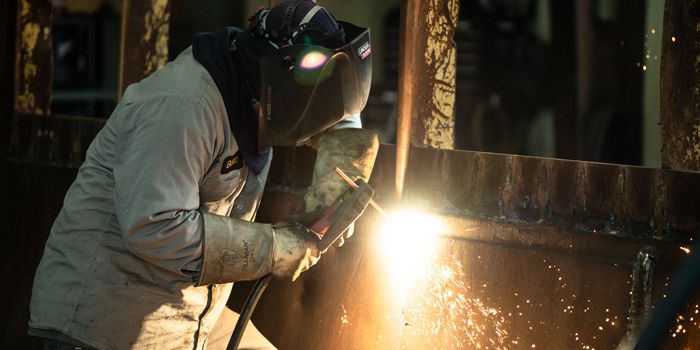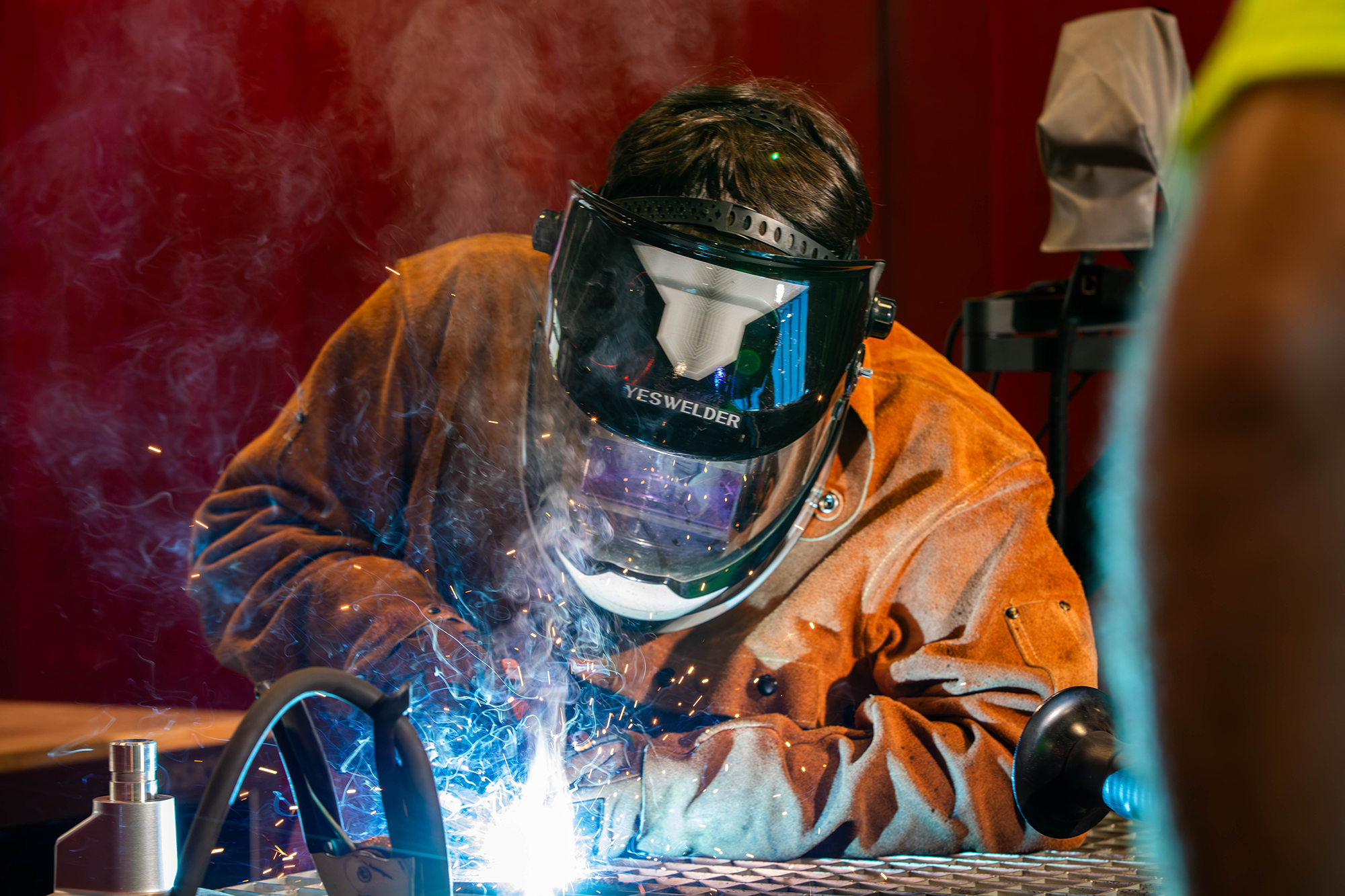Typical Welding Repair Issues and How to Address Them Effectively
Welding repairs often encounter a series of concerns that can threaten the stability of the end product. Usual troubles consist of insufficient penetration, porosity, and misalignment, to name a few. Each defect provides special difficulties that call for specific approaches for resolution. Recognizing these concerns is crucial for welders aiming to improve their outcomes and abilities. This conversation will explore these typical welding repair work problems and reliable approaches to address them.
Insufficient Infiltration
Inadequate infiltration takes place when the weld steel stops working to completely fuse with the base material, resulting in weak joints and possible structural failings. This problem usually stems from insufficient warmth input, incorrect electrode angle, or inappropriate welding rate. Welders may run into insufficient infiltration due to a miscalculation of the needed criteria for a details product thickness or type. Furthermore, contamination on the base material's surface area can hinder reliable bonding, worsening the issue. To resolve insufficient infiltration, welders should guarantee proper settings on their tools and preserve a tidy work surface. Routine evaluation of welds is recommended to recognize any type of deficiencies early, enabling prompt improvements and the prevention of compromised architectural honesty in welded assemblies.
Porosity
Porosity is an usual flaw in bonded joints that materializes as tiny gas bubbles entraped within the weld steel. This problem can jeopardize the stability of the weld, resulting in decreased toughness and prospective failing under tension. Montana Mobile Welding and Repair Welding. Porosity usually occurs from contamination, moisture, or inappropriate welding strategies, which allow gases to leave into the molten weld pool. To resolve porosity, welders ought to assure appropriate surface preparation, maintain a clean workplace, and utilize appropriate welding criteria. In addition, selecting the ideal filler product and shielding gas can mitigate gas entrapment. Routine evaluation and screening of welds can assist determine porosity early, ensuring timely corrective activities are taken, therefore protecting the top quality and integrity of the welded structure
Misalignment
Misalignment in welding can develop from numerous factors, including improper arrangement and thermal development. Understanding the source is important for effective resolution. A number of correction techniques are offered to straighten parts and ensure structural honesty.
Root causes of Imbalance
Welding misalignment often stems from a selection of underlying problems that can jeopardize structural integrity. One primary cause is incorrect fit-up of elements prior to welding, which can cause gaps and uneven surface areas. Variants in thermal growth during the welding process can also cause distortion, especially if the products being signed up with have various coefficients of growth. Furthermore, inadequate fixturing and clamping might fall short to hold elements safely in position, resulting in movement throughout welding. Badly maintained devices, including welding equipments and tools, may introduce incongruities in the weld grain, further contributing to imbalance. Driver error, stemming from inadequate training or experience, can likewise play a significant function in creating misaligned welds.

Correction Techniques Available
Dealing with misalignment efficiently requires a combination of restorative strategies tailored to the certain issues available. One usual technique is using jigs or fixtures to hold components in the appropriate placement during welding, ensuring regular positioning. Furthermore, pre-heating the materials can help in reducing distortion and enhance fit-up. For significant imbalance, mechanical realignment methods, such as using hydraulic jacks or clamps, can be used to correct the setting before welding. Post-weld warmth treatment may likewise be necessary to alleviate stresses triggered by misalignment. Ultimately, mindful evaluation and change during the setup stage can prevent misalignment concerns from coming to be substantial issues, promoting a smoother welding procedure and enhancing overall architectural integrity.
Distortion
Distortion is a typical obstacle in welding that can arise from various factors, including irregular cooling and heating. Comprehending the causes of distortion is important for executing effective avoidance methods. Resolving this problem not only enhances architectural stability however additionally improves the overall top quality of the weld.
Causes of Distortion
When based on the intense heat of welding, products commonly undertake changes that can lead to distortion. This sensation mostly emerges from thermal growth and contraction throughout the welding process. As the weld location heats up, the product expands; upon cooling, it acquires, which can produce interior stress and anxieties. In enhancement, unequal home heating across a workpiece can worsen these stresses, resulting in warping or flexing. The sort of material likewise plays a considerable function; steels with varying thermal conductivity and coefficients of development may react differently, leading to unforeseeable distortions. Bad joint layout and poor fixturing can contribute to misalignment throughout welding, boosting the chance of distortion. Understanding these reasons is necessary for reliable welding repair service and avoidance strategies.
Avoidance Techniques
Efficient prevention strategies for distortion throughout welding concentrate on regulating warmth input and making sure appropriate joint design. Preserving a regular warmth input helps to lessen thermal development and tightening, which can result in distortion. Utilizing techniques such as preheating the workpiece can also reduce the temperature gradient, advertising uniform home heating. Additionally, picking ideal joint styles, such as T-joints or lap joints, can boost security and decrease stress and anxiety focus. Executing correct fixturing to secure the workpieces in position even more help in keeping alignment during the welding process. Lastly, staggered welding sequences can distribute warm more evenly, protecting against localized distortion. By using these strategies, welders can considerably reduce the possibility of distortion and boost the overall high quality of their welds.
Breaking
Cracking is a common concern encountered in welding fixings, commonly resulting from various elements such as improper air conditioning rates, material option, or insufficient joint prep work. The incident of cracks can substantially compromise the honesty of the weld, bring about potential failures throughout operation. To resolve this problem, welders must first evaluate the source, guaranteeing that products are suitable and properly selected for the particular application. In addition, controlling the cooling rate during the welding process is vital; fast air conditioning can cause stress and anxiety and cause breaking. Appropriate joint layout and preparation additionally add to decreasing the threat. Carrying out these techniques can improve weld high quality and durability, inevitably reducing the probability of breaking in ended up weldments.

Incomplete Combination
A significant problem in welding repairs is incomplete blend, which happens when the weld metal does not properly bond with the base material or previous weld passes - Montana Mobile Welding and Repair Fabrication. This defect can result in weak points in the joint, possibly endangering the honesty of the bonded structure. Factors contributing to insufficient fusion consist of not enough warmth input, inappropriate welding strategy, and contamination of the surface areas being signed up with. To resolve this concern efficiently, welders should ensure appropriate pre-weld cleansing and surface prep work, along with adjust their welding parameters to achieve ample infiltration and fusion. Regular examination throughout the welding procedure can likewise aid determine incomplete fusion early, enabling timely restorative measures to improve the total high quality of the weld
Overheating
While welding repair work can enhance architectural stability, overheating presents a substantial difficulty that can result in material destruction. Extreme heat throughout welding can change the mechanical residential or commercial properties of steels, leading to decreased stamina, boosted brittleness, and bending. This phenomenon is especially important in high-stress applications where structural integrity is paramount. Recognizing overheating can include visual assessments for discoloration or distortion, in addition to monitoring temperature level throughout the welding process. To alleviate the dangers connected with overheating, welders must employ ideal strategies, such as controlling heat input, readjusting traveling speed, and using ideal filler products. Furthermore, applying pre- and post-weld heat therapies can aid recover product residential or commercial properties and boost the overall high quality of the repair service, ensuring long-term performance and safety.
Often Asked Questions
What Are the Common Indications of a Welding Issue?

Just How Can I Check My Welds for High quality?
To test welds for top quality, one can utilize aesthetic evaluations, ultrasonic screening, and radiographic approaches. Each method guarantees structural integrity, recognizes issues, and journeyman welder validates adherence to specified criteria, ultimately improving the dependability of the bonded joints.
What Safety Preventative Measures Should I Take While Welding?
When welding, one ought to focus on safety and security by wearing suitable individual protective devices, ensuring appropriate ventilation, protecting combustible materials away, keeping a clean work area, and recognizing surroundings to stop injuries and mishaps.
Can I Fix a Weld Without Renovating the Entire Joint?
Fixing a weld without redesigning the whole joint is feasible, relying on the damages (Belgrade Fabrication). Techniques such as grinding, adding filler material, or using a welding process can effectively deal with certain flaws while maintaining the bordering framework
What Equipment Are Essential for Reliable Welding Repair Works?
Vital tools for reliable welding repairs include a welding device, wire brush, grinder, protective gear, clamps, and filler products. Each device plays an essential role in ensuring top quality and security during the repair procedure. Porosity generally occurs from contamination, moisture, or inappropriate welding techniques, which permit gases to get away right into the liquified weld pool. Inadequately kept devices, including welding devices and devices, may introduce variances in the weld bead, additional adding to imbalance. When subjected to the extreme warmth of welding, materials commonly go through modifications that can lead to distortion. Cracking is a typical concern run into in welding repairs, often resulting from various factors such as incorrect cooling prices, material selection, or poor joint preparation. A substantial problem in welding repairs is insufficient fusion, which occurs when the weld metal does not sufficiently bond with the base material or previous weld passes.